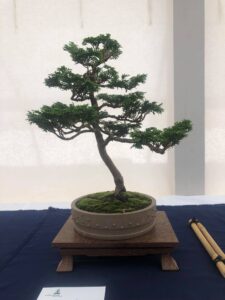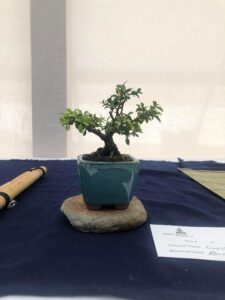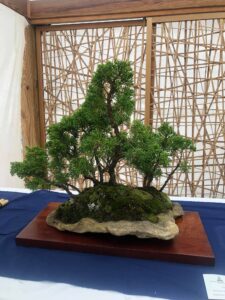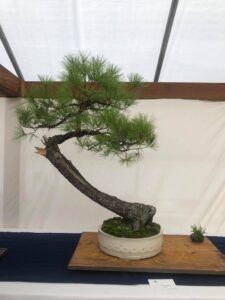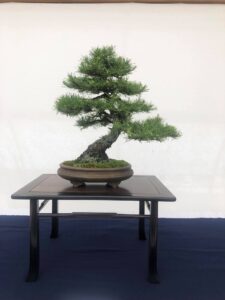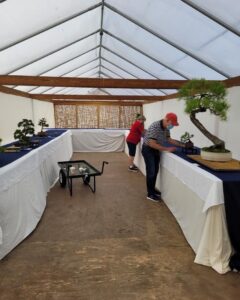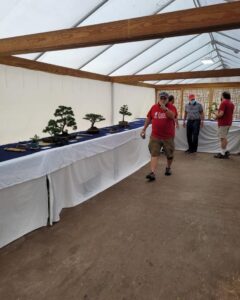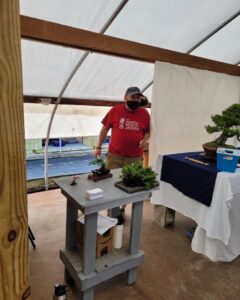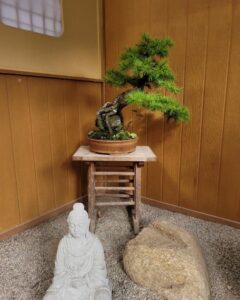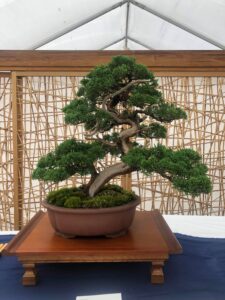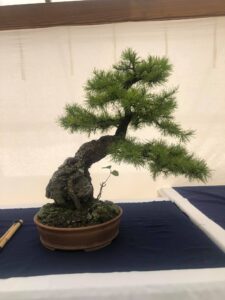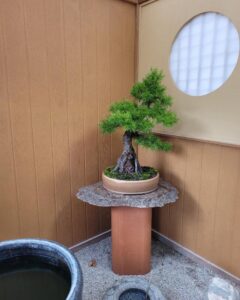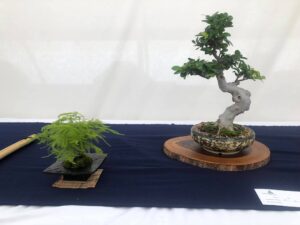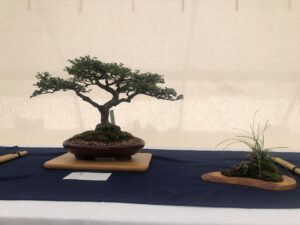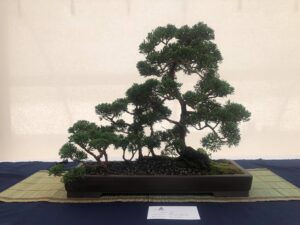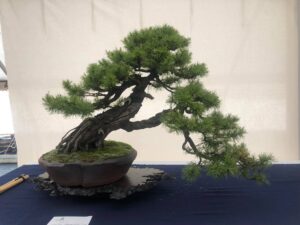Welcome to our comprehensive guide on bonsai care! Bonsai trees are a beautiful and intricate art form that requires special attention and diligence to thrive. In this section, we will provide expert tips on how to grow and maintain healthy bonsai trees.
Bonsai care involves various aspects, from watering to pruning, soil requirements to fertilization, styling to overall maintenance. By following the advice outlined in this article, you can cultivate a healthy and thriving bonsai tree, unlocking its full potential as an art form.
Key Takeaways:
- Bonsai care requires special attention and diligence to thrive.
- Various aspects of care, including watering, pruning, soil requirements, fertilization, styling, and overall maintenance, contribute to the health and growth of your bonsai tree.
- Following expert tips and guidance will help you unlock your bonsai’s full potential as an art form.
How to Care for a Bonsai Tree
Proper care is essential for the health and longevity of your bonsai tree. In this section, we will provide step-by-step instructions on how to care for your bonsai, covering watering, pruning, and soil requirements. Following these tips will ensure your bonsai tree thrives and remains healthy for years to come.
Bonsai Watering Tips
Watering is one of the most crucial aspects of bonsai care. To ensure your bonsai receives the proper amount of water, follow these tips:
- Water your bonsai when the soil is almost dry. This will prevent over-watering, which can lead to root rot.
- Water your bonsai thoroughly until the water runs out of the drainage holes. This ensures that the roots receive enough water.
- Check the moisture level of the soil regularly by sticking your finger into the soil. If it feels dry, it is time to water your bonsai.
- Use room temperature water, as cold water can shock the roots and harm your bonsai.
By following these watering tips, you can keep your bonsai hydrated and healthy.
Bonsai Pruning Techniques
Pruning is necessary to maintain the shape and aesthetic of your bonsai. Here are a few tips:
- Use sharp and clean pruning shears to avoid damaging the branches and leaves.
- Prune your bonsai regularly to maintain its shape and size.
- Remove any dead or yellowing leaves, as they can attract pests and harm the health of your tree.
- Prune branches back to the desired length to promote new growth and maintain the shape of the tree.
By following these pruning techniques, your bonsai will continue to thrive and look beautiful.
>> LEARN MORE: What is back Budding?
Bonsai Soil Requirements
Choosing the right soil is crucial for the health of your bonsai. Here are a few tips:
- Use well-draining soil specifically designed for bonsai trees.
- Avoid using regular potting soil, as it can retain too much moisture and harm the roots of your bonsai.
- Repot your bonsai every one to two years to ensure it has fresh soil and enough room for its roots to grow.
By following these soil requirements, your bonsai will have a healthy and suitable environment to grow in.
Now that you have learned about watering, pruning, and soil requirements for your bonsai, you can ensure that your tree will grow and thrive. Following these tips will help your bonsai reach its full potential and become a beautiful and healthy addition to your home or garden.
Bonsai Fertilization: Nourishing Your Tree
One of the most critical aspects of bonsai care is fertilization. An effective fertilizer regimen will provide your bonsai with the essential nutrients for healthy growth and development. Proper fertilization should begin in the early stages of tree development and continue throughout the tree’s life cycle.
There are several types of fertilizers suitable for bonsai, including organic and inorganic options. Organic fertilizers are derived from natural sources such as bone meal, fish emulsion, and seaweed extract. Inorganic fertilizers are synthetic, and their nutrients are derived from chemical compounds.
The frequency of fertilization depends on the type of fertilizer used and the season. During the growing season, bonsai should be fertilized every two weeks with a balanced fertilizer. In the dormant seasons, no fertilization is required.
MORE LIKE THIS: How to wire a bonsai pot
Fertilizer Application Methods
There are two primary methods of applying fertilizer to bonsai trees: top-dressing and liquid feeding. Top-dressing involves adding the fertilizer to the topsoil layer, where it gradually releases the nutrients. Liquid feeding is done by diluting the fertilizer in water and applying it directly to the tree’s soil.
| Fertilizer Type | Application Method | Frequency |
| Organic | Top-dressing | Every 4-6 weeks |
| Inorganic | Liquid feeding | Every 2 weeks during growing season |
Timing of Fertilization
The timing of fertilization is crucial to bonsai care. Applying fertilizer during the wrong season or at the wrong time of day could damage the tree or weaken its root system. During the growing season, fertilization should take place in the morning or evening when temperatures are cooler. Fertilization during the hottest part of the day can burn the tree’s roots and harm its overall health.
By following these bonsai fertilization tips, you can ensure your tree receives the necessary nutrients for healthy growth and vibrant foliage. Remember to choose the right fertilizer, apply it correctly, and time it correctly according to your tree’s specific needs.
Bonsai Styling and Maintenance
While bonsai care requires technical knowledge and skills, it also offers an artistic outlet for creative expression. Styling your bonsai tree involves shaping it to create a harmonious and visually appealing composition.
One essential aspect of bonsai styling is determining the front of your tree, which is the angle that offers the best overall view. Emphasizing the front will guide the rest of your styling decisions, including branch selection, pruning, and wiring.
When pruning your bonsai, focus on removing branches that detract from the overall balance and harmony of the tree. Use sharp and clean tools to make precise cuts, avoiding any damage to the surrounding bark.
Wiring is another technique used in bonsai styling, which involves wrapping the branches with wire to guide their growth and shape. Use a wire that is approximately one-third the thickness of the branch, and wrap it in a spiral pattern along the length of the branch.
Overall maintenance is also essential for bonsai care. Regular repotting ensures that your tree has sufficient space and nutrients to grow, while pest control and seasonal care prevent any damage or harm to your bonsai.
Bonsai Care: Expert Tips for Growing & Maintaining Healthy Trees
Cultivating a healthy bonsai tree requires patience, dedication, and a willingness to learn. As you embark on your bonsai care journey, keep in mind that this ancient art form is both rewarding and challenging.
By following expert tips for bonsai care, you can create a beautiful and thriving miniature tree that will bring joy and tranquility to your home. Keep reading to learn about watering, pruning, soil requirements, fertilization, styling, and maintenance.
How to Care for a Bonsai Tree
Proper bonsai care begins with understanding the tree’s basic needs. Watering is essential to keep your bonsai hydrated and healthy. Make sure to water your bonsai regularly, but avoid overwatering, as this can suffocate the roots and cause damage. Additionally, check the soil regularly to ensure it has proper drainage.
Pruning is another crucial aspect of bonsai care. Use the appropriate tools and techniques to trim and shape your tree regularly. This will promote healthy growth and help you achieve the desired aesthetic effect.
The soil requirements for bonsai trees differ from those of other potted plants. Ensure you use the right soil mixture containing the appropriate amount of nutrients and minerals. This will support healthy growth and development.
Bonsai Fertilization: Nourishing Your Tree
Fertilization is a vital component of bonsai care. Use the right type of fertilizer and apply it at the right time, following the manufacturer’s instructions. Avoid using too much fertilizer, as this can lead to unhealthy growth and damage the tree’s roots.
Bonsai Styling and Maintenance
The artistry of bonsai styling is both exciting and challenging. Use the appropriate tools and techniques to shape your bonsai tree into a visually appealing composition. Additionally, maintain your bonsai regularly, including repotting, pest control, and seasonal care.
Conclusion
Now that you have expert tips for bonsai care, it’s time to start your journey and unlock your bonsai’s full potential. Remember to be patient, consistent, and willing to learn along the way. With dedication and attention to detail, you can cultivate and maintain a beautiful and thriving miniature tree that will bring you joy for years to come.
FAQ
Q: How often should I water my bonsai tree?
A: Bonsai trees should be watered when the soil starts to feel slightly dry. The frequency of watering will depend on factors such as the size of the tree, the type of soil used, and the environmental conditions. It’s important to check the moisture levels regularly and adjust the watering schedule accordingly.
Q: What are some pruning techniques for bonsai trees?
A: Pruning is an essential aspect of bonsai care and is used to shape and maintain the tree’s desired form. Techniques such as pinching, trimming, and wiring can be employed to remove excess growth, encourage branching, and create the desired aesthetic. It’s important to learn and practice proper pruning techniques to prevent damage to the tree.
Q: What type of soil is best for bonsai trees?
A: Bonsai trees require well-draining soil that provides adequate oxygen to the roots. A mix of components such as akadama, pumice, and lava rock is commonly used to create a balanced soil mixture. It’s important to choose a soil composition that suits the specific needs of your bonsai tree species.
Q: How often should I fertilize my bonsai tree?
A: Bonsai trees benefit from regular fertilization to maintain their health and promote growth. The frequency of fertilization will depend on the type of fertilizer used and the specific needs of your tree. Generally, bonsai trees are fertilized every few weeks during the growing season and less frequently during the dormant period.
Q: How can I style and maintain my bonsai tree?
A: Styling your bonsai tree involves techniques such as wiring, branch positioning, and leaf pruning to create a visually appealing composition. Regular maintenance tasks such as repotting, pest control, and seasonal care are also important to ensure the overall health and longevity of your bonsai tree. It’s important to learn and practice proper styling and maintenance techniques to keep your bonsai tree thriving.





